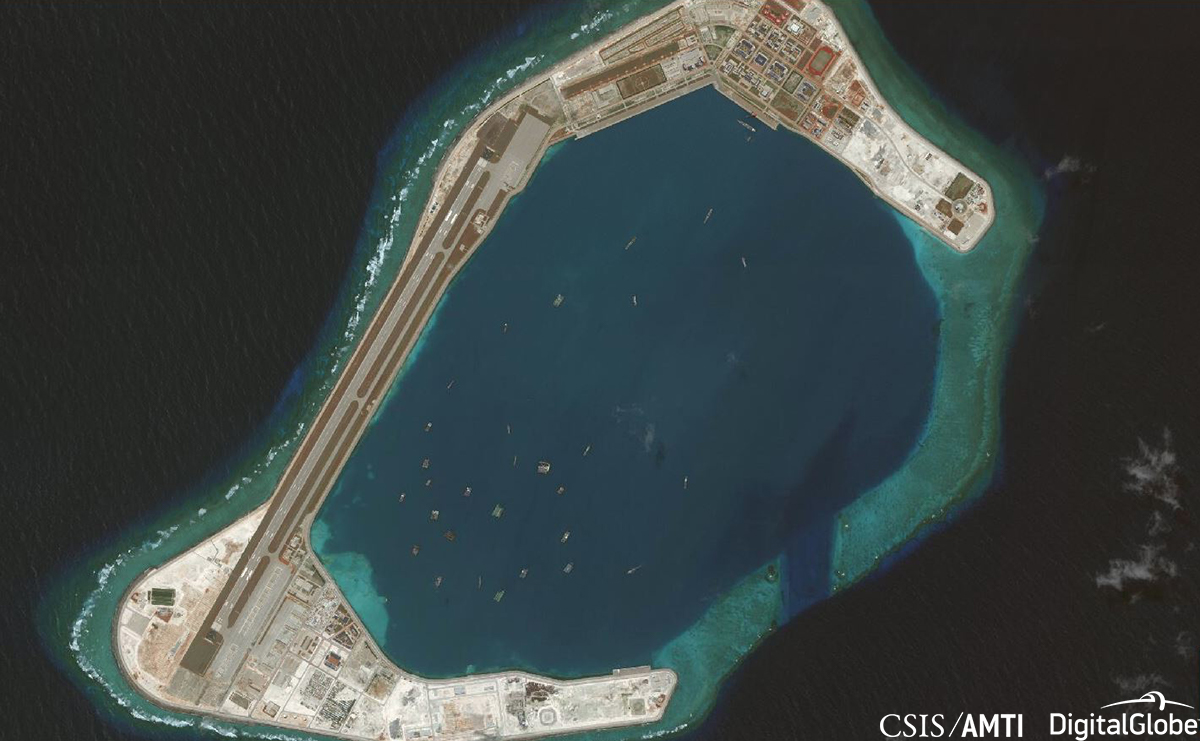Why China’s ‘fishing fleet’ in the South China Sea is a cause for concern
MANILA, Philippines — China’s naval and coastguard vessels have been consistently present in the South China Sea, especially that its artificial naval air bases in the Spratly Islands are already operational. But what does not often get attention is the presence of its maritime militia.
While they appear as fishing fleets, this unit should not be taken lightly, said Washington-based security analyst Gregory Poling. They intimidate other claimants in the South China Sea, including the Philippines.
“What Beijing has done in the past several years is to establish 24/7 constant presence of naval and coast guard vessels as well as paramilitary militia throughout the South China Sea in a way that was unprecedented just 4 or 5 yrs ago,” he said at a maritime security forum in Makati on Friday.
“I mentioned the maritime militia, the paramilitary forces or how we’d like to categorize them. I think we have an impression that this is relatively minor part of the Chinese arsenal and we are at a mistake,” he said.
Poling presented a satellite image of Zamora Reef (Subi) taken in August, showing about 200 boats in the lagoon in just a single day. The boats have an average length of 51 meters, much larger than the fishing boats of the Philippines and other claimants.
“None of these boats are actually fishing, everyone appeared as maritime militia. When we tracked them..we never see them doing anything other than intimidating others,” he said.
He said these boats often leave the lagoon and hang out around Pagasa Island (Thitu) for days and weeks to intimidate Filipino resupply missions.
Pagasa, the largest island occupied by the Philippines in the Spratlys, is just located 12 nautical miles from Zamora Reef.
In its annual report to Congress, the Pentagon defines China’s maritime militia as “an armed force of civilians available for mobilization” and the “only government-sanctioned maritime militia in the world.”
The militia work conducted by the People’s Armed Forces Maritime Militia (PAFMM) allows China to pursue its objectives in the disputed waters without risking conflict.
“In the South China Sea, the PAFMM plays a major role in coercive activities to achieve China’s political goals without fighting, part of broader PRC military doctrine stating confrontational operations short of war can be an effective means of accomplishing political objectives,” it said.
“In the past, the PAFMM rented fishing vessels from companies or individual fishermen, but China has built a state-owned fishing fleet for at least part of its maritime militia force in the South China Sea,” it added.
The Pentagon said some of the incidents to which the militia played a significant role include: 2012 Scarborough Shoal standoff, large surge of ships near the Senkakus in 2016, and the patrol of Sandy Cay near Pagasa Island in August 2017. /je
